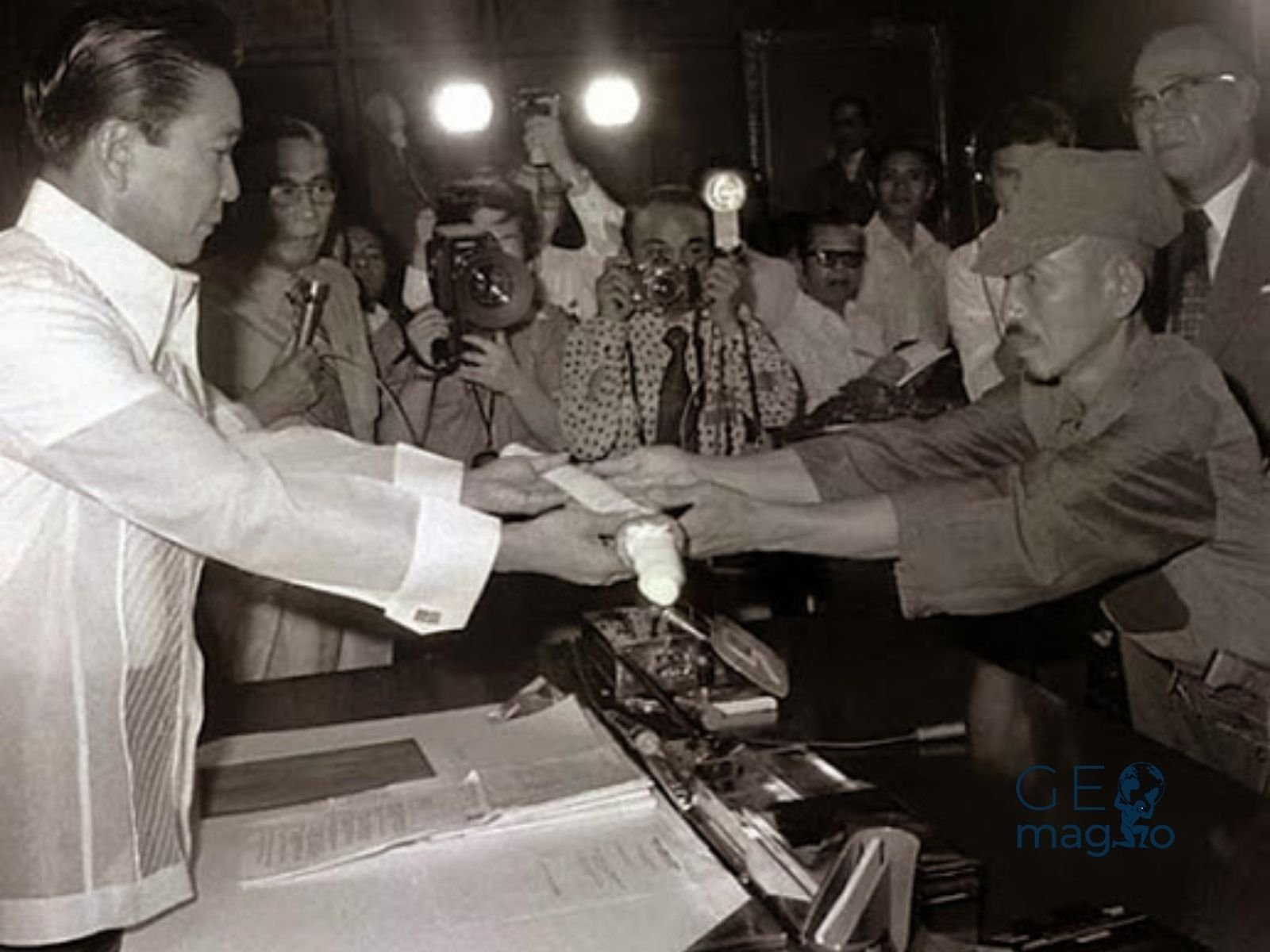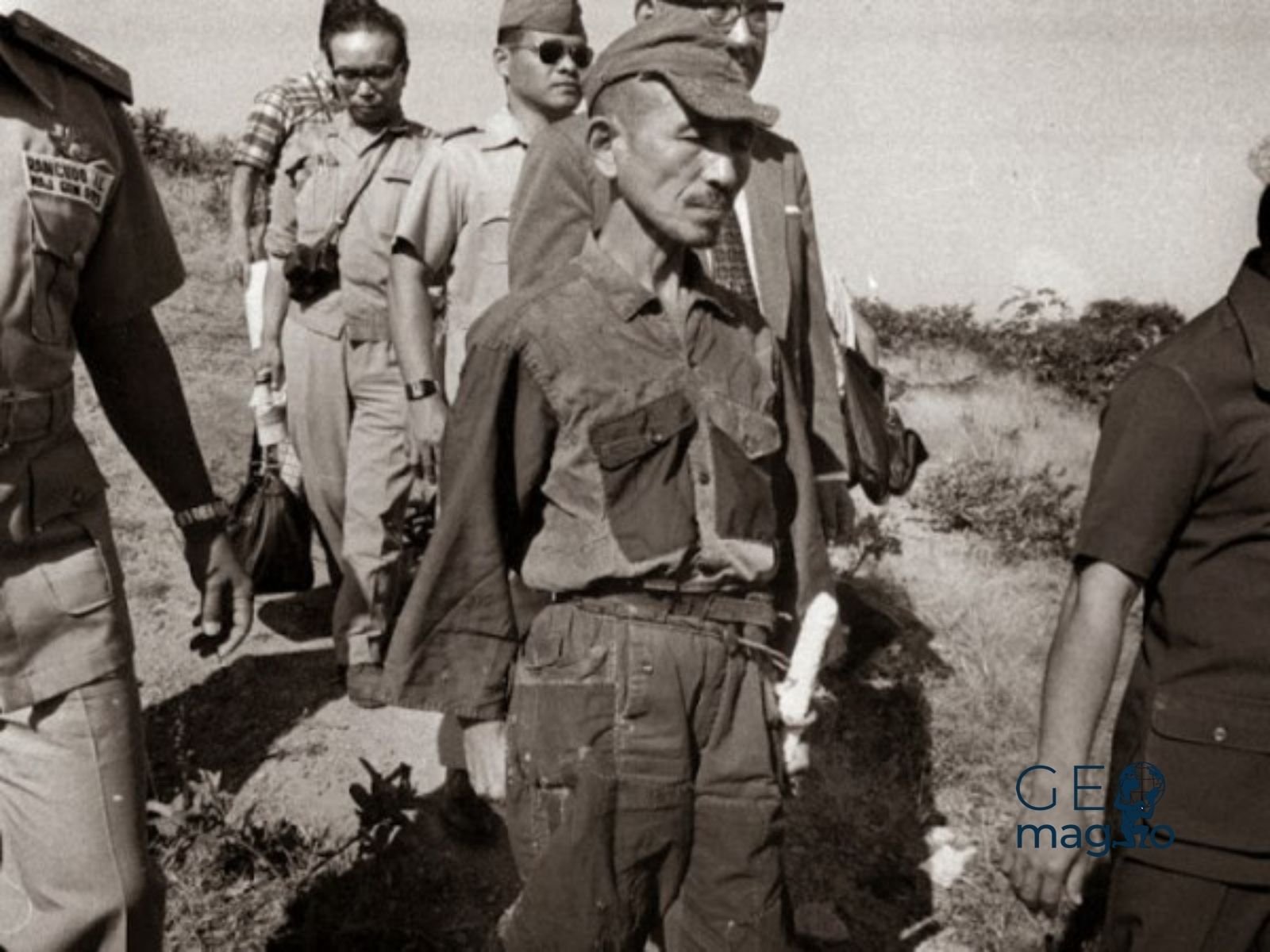Officer Hiroo Onoda had been sent to Lubang Island in December 1944, where he joined a group of Japanese soldiers who had the mission to resist enemy attacks at any cost.
The Beginning of Hiroo Onoda’s Insurgency
On February 28, 1945, American troops attacked and, after a four-day battle, all Japanese combatants were killed or captured, except for Onoda and three other soldiers, who ran to the mountains. From then on, decades of insurgency were initiated, even after the war. Several warnings left by island natives and leaflets were dropped from military aircraft announcing the end of World War II, but the Japanese soldiers refused to believe it.
In September 1949, Akatsu, one of the soldiers, surrendered to Philippine authorities and shortly after, left a message for his three compatriots who remained in the jungle, warning that the war had indeed ended and that he had not suffered any retaliation. However, Onoda and his companions deduced that it was a betrayal by their former companion and an enemy tactic to capture them.
In 1954, Shimada, a Japanese soldier who had left for war leaving his young wife with a newborn daughter, was killed. On October 19, 1972, the last companion, Kozuka, also fell after an attack. Onoda was alone in the jungle. In 1974, Norio Suzuki, a Japanese student, went to Lubang Island, where he found the Japanese officer and warned him about the end of the war. The Japanese officer still refused to believe it. Suzuki returned to Japan and reported the situation to the government, which located Onoda’s former commander, Major Yoshimi Taniguchi, who had become a bookseller after the war.
Hiroo Onoda’s Surrender

Hiroo Onoda surrenders to the Philippine president in 1974. Upon his surrender, he handed over his sword, about 500 ammunition cartridges and several hand grenades.
Taniguchi went to Lubang, where he personally met with Hiroo Onoda and formally communicated the end of the war to the former officer, issuing the order to lay down arms. Throughout the nearly 29 years of guerrilla warfare, the small group had killed about 30 Filipinos in various attacks, but Onoda was freed when he surrendered to authorities, since he received forgiveness from Philippine President Ferdinand Marcos.
Upon his return to his homeland, Onoda was received by about 4,000 compatriots at the airport and became a very popular figure in Japan. He published an autobiography titled No Surrender: My Thirty-Year War.
Post-Guerrilla Life
In April 1975, he moved to Brazil, where he worked as a farmer in Jamic Colony, a Japanese community in Terenos, Mato Grosso do Sul, together with his older brother, Tadao. He married in 1976 and assumed a leadership role in the colony. In 1984, Onoda returned to Japan, where he established the Onoda Shizen Juku, an educational camp for young people that is held in various locations in Japan.
Onoda was decorated with the Santos-Dumont Merit Medal by the Brazilian Air Force on December 6, 2004. On February 21, 2010, the Legislative Assembly of Mato Grosso do Sul granted him the title of “Citizen of Mato Grosso do Sul.” Hiroo Onoda visited Brazil regularly until he died at age 91 in Tokyo on January 17, 2014.

